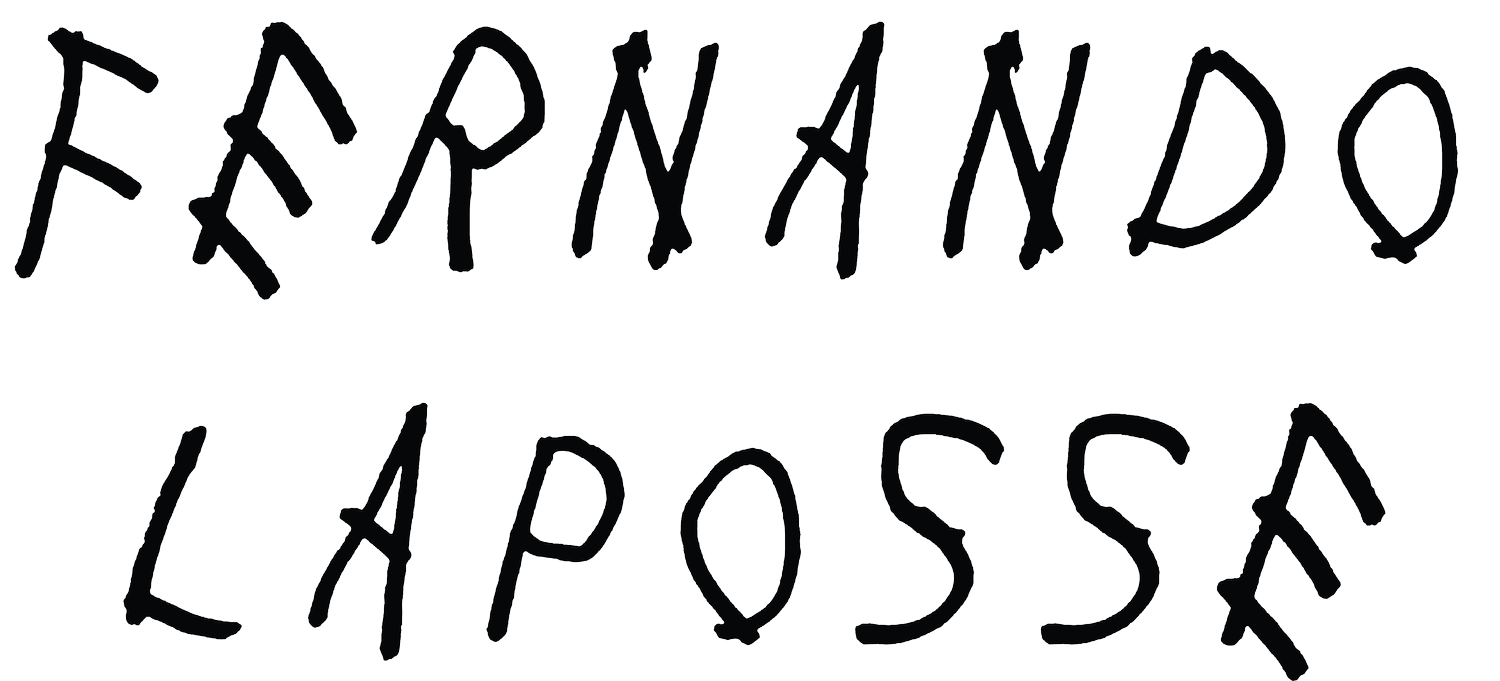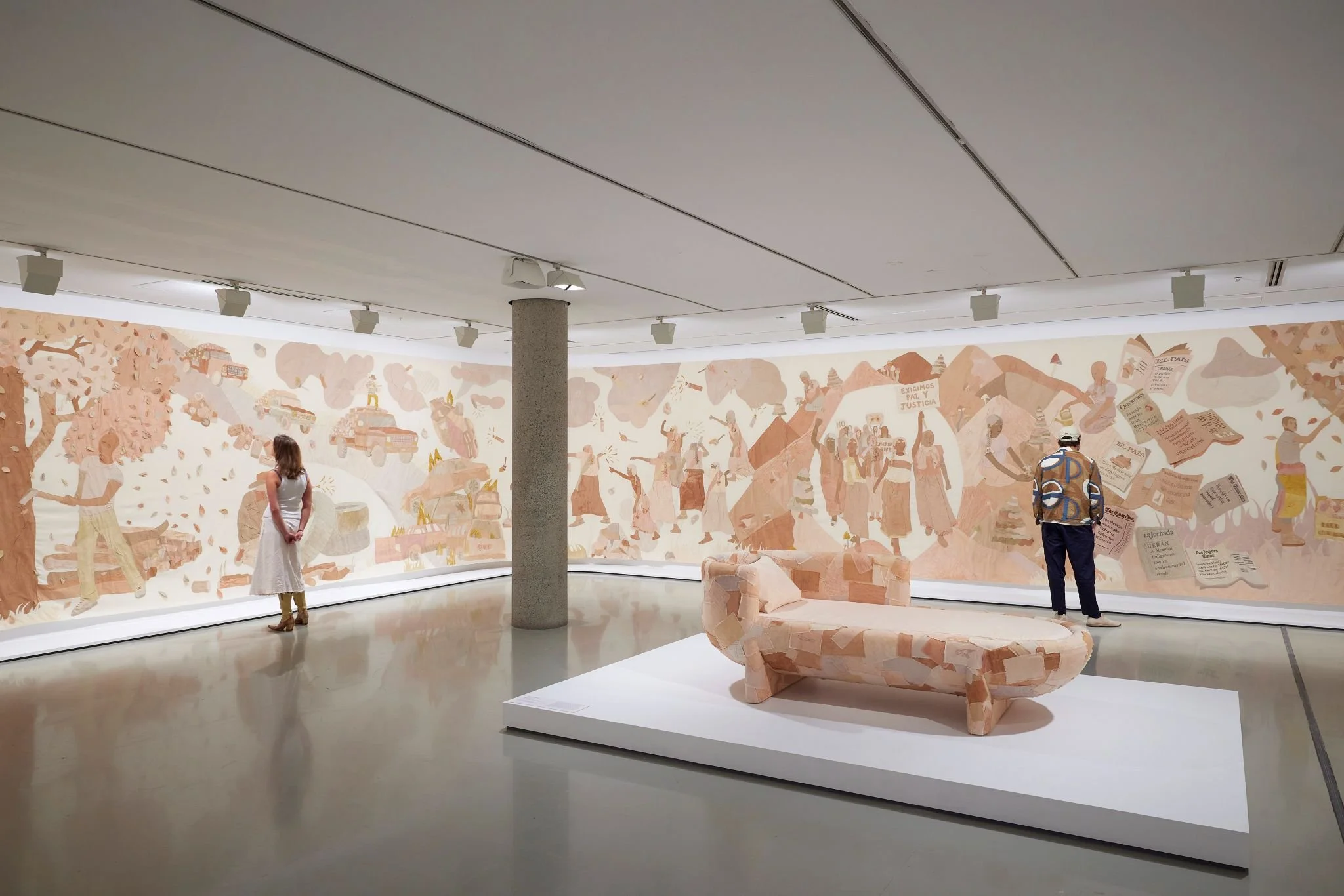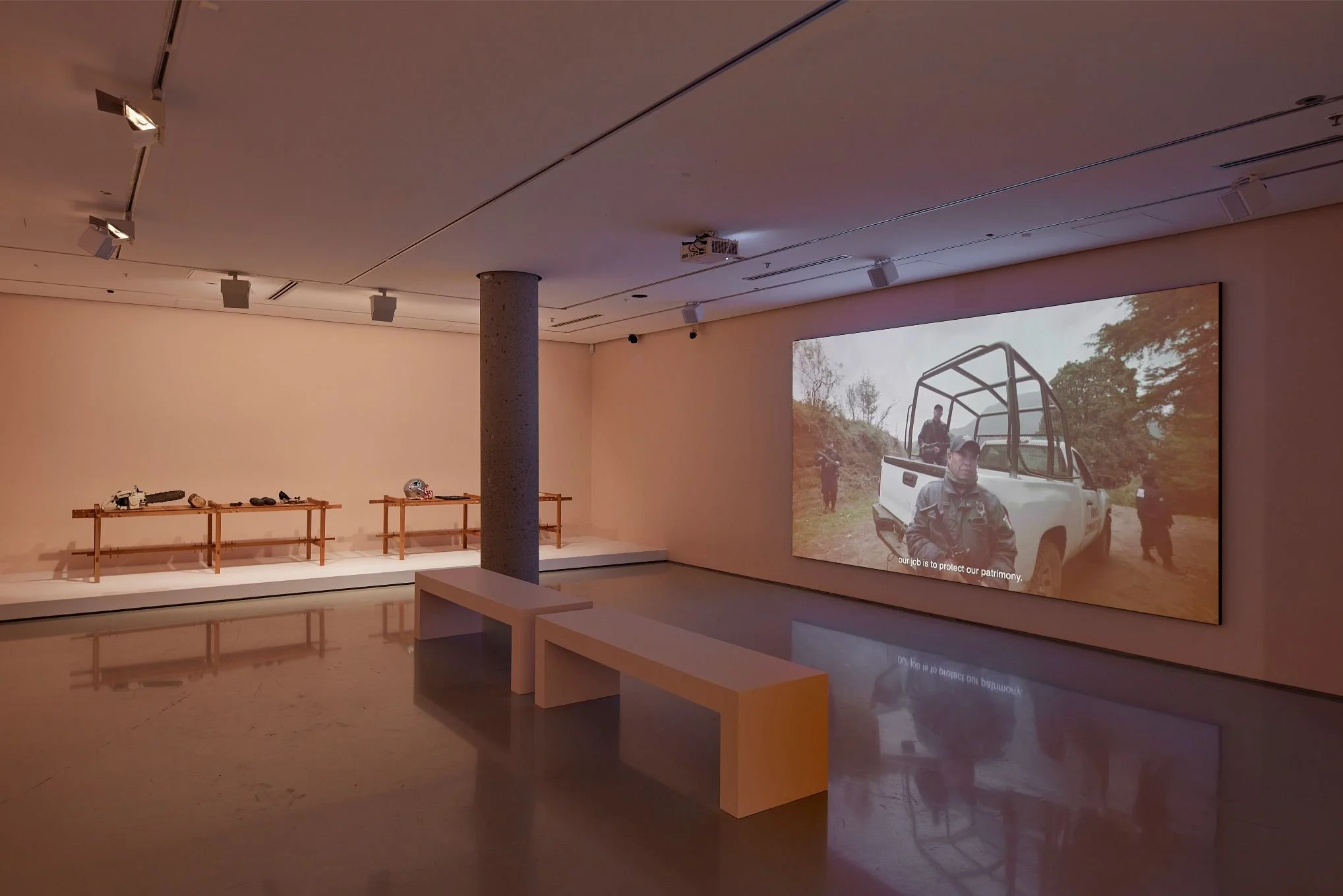NGV Triennal - Conflict Avocados
Fernando Laposse created a 40-metre-long tapestry in avocado dye and a cabinet with avocado skin to raise awareness of the social and ecological impacts global avocado consumption has in Mexico. Named Conflict Avocados, the pair of pieces were on display as part of the NGV Triennial at National Gallery of Victoria in Melbourne, Australia. Fernando Laposse created a 40-metre-long tapestry to document the struggles of people in Mexico because of the avocado trade. The handmade tapestry was made from fabrics dyed with avocado-seed pigment and marigold flowers.
It illustrates the entangled stories of the Monarch butterfly, the global avocado trade and the struggles of the people of Cheran, an indigenous community in Michoacan, Mexico, who were trying to prevent illegal loggers from clearing land for avocado plantations. Laposse started the project as a way of drawing attention to the impact deforestation has on butterflies after speaking to a local environmentalist Homero Gómez González, who takes care of the Monarch Butterfly Sanctuary.
The project took a dramatic turn when González disappeared on 13th January 2020 – it is assumed that he was murdered. This motivated Laposse to focus on the human impact of the avocado trade, as well as its existing impact on nature, which eventually led him to Michoacan, where the majority of the world's avocados are grown and exported.






